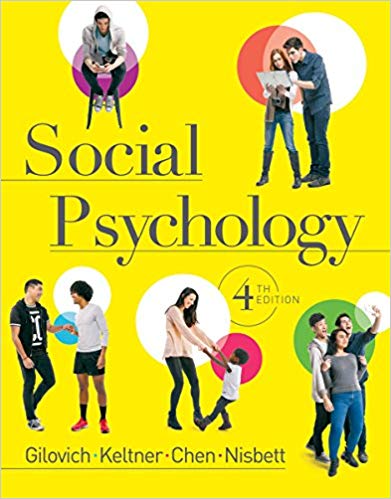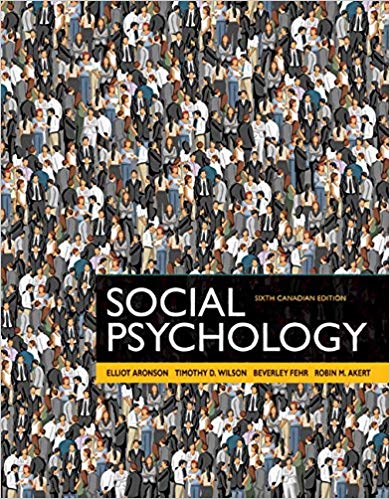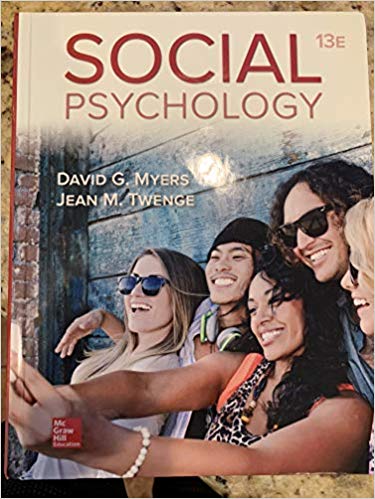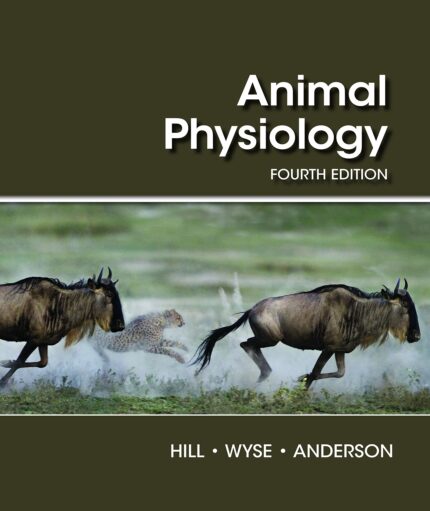Social Psychology 4th Edition By Tom Gilovich – Test Bank
APPLICATION MODULE 4: Social Psychology and the Law
MULTIPLE CHOICE
1. Eyewitness errors have been found to be involved in more than ________ percent of cases of wrongful convictions.
|
a. |
50 |
c. |
75 |
|
b. |
25 |
d. |
90 |
ANS: A DIF: Easy REF: Before a Case Goes to Trial
OBJ:AM4.1AMSC:Remembering
2. The textbook describes research conducted by Loftus and colleagues in which participants were shown pictures of an automobile accident and were asked questions about the pictures. Some participants were asked questions that were consistent with what they actually saw, but some participants were asked misleading questions. Which of the following best describes the results of this research?
|
a. |
Most participants correctly remembered the pictures, no matter what kinds of questions they were asked. |
|
b. |
All participants had difficulty correctly remembering the pictures, no matter what kinds of questions they were asked. |
|
c. |
The misleading questions impaired participants’ abilities to recall the pictures correctly. |
|
d. |
The misleading questions affected memory only in participants younger than ten years of age. |
ANS: C DIF: Easy REF: Before a Case Goes to Trial
OBJ:AM4.1AMSC:Understanding
3. Loftus and Pickrell persuaded the family members of college students to tell stories about when their student relative was five years old, including one “story” that was actually fake and never really happened. How did the students respond?
|
a. |
All the students were able to distinguish between the true stories and the fake ones. |
|
b. |
About 25 percent of the students “recalled” the fake event. |
|
c. |
Students who were more suggestible “recalled” the fake event. |
|
d. |
About 90 percent of the students “recalled” the fake event. |
ANS: B DIF: Moderate REF: Before a Case Goes to Trial
OBJ:AM4.1AMSC:Understanding
4. We should be careful about trusting eyewitness accounts because memory is
|
a. |
an active, constructive process that can be affected by all kinds of information. |
|
b. |
often incorrect, particularly in children. |
|
c. |
a registry of the information that a person has encountered. |
|
d. |
usually reliable, except in people with mental illness. |
ANS: A DIF: Moderate REF: Before a Case Goes to Trial
OBJ: AM4.1A MSC: Evaluating
5.In cases in which defendants are convicted and later proved innocent by DNA tests, as many as ________ had falsely confessed to the crime.
|
a. |
one-half |
c. |
three-fourths |
|
b. |
one-quarter |
d. |
one-fifth |
ANS: D DIF: Moderate REF: Before a Case Goes to Trial
OBJ:AM4.1AMSC:Remembering
6.Travis is part of a six-person jury on a money laundering case. Although the majority of jury members believe that the defendant is guilty, Travis believes that she did not do it. He tries to convince the others of his perspective. Why might Travis be more successful in making his case if he was part of a typical twelve-person jury, rather than this six-person jury?
|
a. |
Travis is more likely to try harder if he has to convince eleven other people. |
|
b. |
Travis is more likely to have an ally in a twelve-person jury. |
|
c. |
By law, twelve-person juries have to deliberate longer. |
|
d. |
Twelve-person juries have access to more evidence. |
ANS:B DIF:EasyREF: Inside the Courtroom
OBJ: AM4.2A MSC: Applying
7. Tina is a defense attorney working on a grand larceny (i.e., stealing a large amount of money) case. Given what you know about jury selection concerns, who does Tina NOT want to be placed on the jury?
|
a. |
Laura, a mother of three |
c. |
Marco, a physical therapist |
|
b. |
Dung, a social worker |
d. |
Lyn, a wealthy executive |
ANS:DDIF:EasyREF: Inside the Courtroom
OBJ: AM4.2A MSC: Applying
8. Sheila, an attorney, worries that she will be unable to pick good jurors. Instead, she hires a specialist to conduct surveys and compile statistics on what demographic qualities of jurors might predict support for her client. Sheila is using ________ to pick her jury.
|
a. |
scientific jury selection |
c. |
logic |
|
b. |
peremptory challenges |
d. |
partiality testing |
ANS:ADIF:ModerateREF: Inside the Courtroom
OBJ: AM4.2A MSC: Applying
9. All of the following are true of death-qualified jurors EXCEPT they are more
|
a. |
concerned about crime. |
|
b. |
skeptical of civil liberties that protect the rights of the accused. |
|
c. |
likely to convict the suspect. |
|
d. |
distrusting of police. |
ANS:DDIF:ModerateREF: Inside the Courtroom
OBJ:AM4.2AMSC:Understanding
10. Research has shown that merely hearing the questions typically asked in the death-qualification part of jury selection tends to bias potential jurors toward conviction, because
|
a. |
those jurors are already biased toward conviction before they begin the death-qualification process. |
|
b. |
the death-qualification questions contain misleading information about the suspect, which changes jurors’ opinions. |
|
c. |
the death-qualification questions contain an implication of guilt, so the jurors are biased into thinking of the suspects as guilty. |
|
d. |
the death-qualification questions weed out jurors who can be fair, leaving only biased jurors. |
ANS:CDIF:DifficultREF: Inside the Courtroom
OBJ:AM4.2AMSC:Understanding
11. Research conducted by Hastie, Penrod, and Pennington tested whether juries deliberated cases differently based on whether they had to reach a unanimous decision or a majority decision. What did this research show?
|
a. |
There were no differences in how juries deliberated, whether they had to reach unanimity or not. |
|
b. |
Juries who had to reach a unanimous decision deliberated longer than those who had to reach only a majority decision. |
|
c. |
Juries who had to reach a majority decision deliberated longer than those who had to reach a unanimous decision. |
|
d. |
Juries who had to reach a majority decision were unable to reach a final verdict. |
ANS:B DIF:ModerateREF: Inside the Courtroom
OBJ:AM4.2AMSC:Understanding
12. Vanessa is part of a jury that has to make a unanimous decision to convict the defendant. Yemaya is part of a jury that can convict the defendant with a two-thirds majority rule. What is likely to differ across Vanessa’s and Yemaya’s juries?
|
a. |
Yemaya’s jury is likely to arrive at its verdict faster. |
|
b. |
Vanessa’s jury is likely to arrive at its verdict faster. |
|
c. |
Vanessa’s jury is more likely to convict the defendant. |
|
d. |
Yemaya’s jury is more likely to convict the defendant. |
ANS:ADIF:ModerateREF: Inside the Courtroom
OBJ: AM4.2A MSC: Applying
13. Social scientists have differentiated two motives that determine preferences for different kinds of punishment. These motives are
|
a. |
just desserts and deterrence. |
|
b. |
deterrence and punitive. |
|
c. |
compensatory and punitive. |
|
d. |
just desserts and eye-for-an-eye. |
ANS: A DIF: Easy REF: Punishment OBJ: AM4.3A
MSC: Analyzing













Reviews
There are no reviews yet.